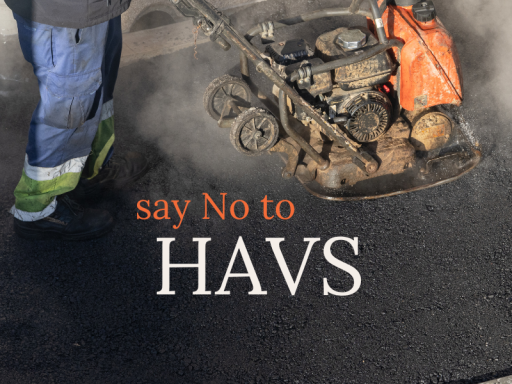What is HAVS?
HAVS is a condition caused by prolonged exposure to vibration from hand-held power tools. The vibration can damage blood vessels, nerves, and joints in the hands and arms, leading to pain, numbness, and reduced dexterity. Industries such as construction, manufacturing, and agriculture are particularly at risk.
Did you know that . . .
- Vibration can cause long-term painful damage to your hands and fingers?
- Shocks and jolts from driving certain types of vehicle can cause severe back pain?
The Dangers of HAVS
The effects of HAVS can be debilitating, impacting both the individual and the business. Symptoms may include:
🔸 Numbness and tingling in the fingers
🔸 Not being able to feel things properly
🔸 Loss of grip strength
🔸 Fingers going white (blanching) and becoming red and painful on recovery (particularly in the cold and wet, and probably only in the tips at first)
Left untreated, HAVS can lead to permanent disability and a significant reduction in quality of life.
Preventing HAVS
Fortunately, HAVS is preventable. Employers have a legal responsibility to assess and control vibration risks in the workplace. Key prevention measures include:
🔸 Reducing exposure time: Limiting the duration of vibration exposure is crucial.
🔸 Using low-vibration tools: Investing in tools with lower vibration levels can significantly reduce risk.
🔸 Providing protective gloves: Anti-vibration gloves can help to absorb some of the vibration.
🔸 Regular breaks: Encouraging workers to take regular breaks from using vibrating tools can help prevent fatigue and reduce the risk of injury.
🔸 Health surveillance: Monitoring workers' health through regular checks can help identify early signs of HAVS.
The Role of Employers
Employers play a vital role in preventing HAVS. By implementing effective control measures and prioritising worker health and safety, businesses can create a healthier and more productive workplace.
Where the risks are low, the actions you take may be simple and inexpensive, but where the risks are high, you should manage them using a prioritised action plan to control exposure to hand-arm vibration. Identifying signs and symptoms at an early stage is important. It will allow you, as the employer, to take action to prevent the health effects from becoming serious for your employee.
The Health and Safety Executive (HSE) has identified good practice controls that can help to eliminate or reduce vibration risk. HSE inspectors are promoting these controls during inspections and will expect to see evidence of the elimination or of the reduction to the lowest level that is reasonably practicable. Where vibration risks remain, inspectors will be looking for evidence that the risks are being managed adequately and that suitable health surveillance is in place
For information on established good practice for managing HAV risks in your workplace please contact us at What No Safety for expert advice and support.
Resources for Information:

